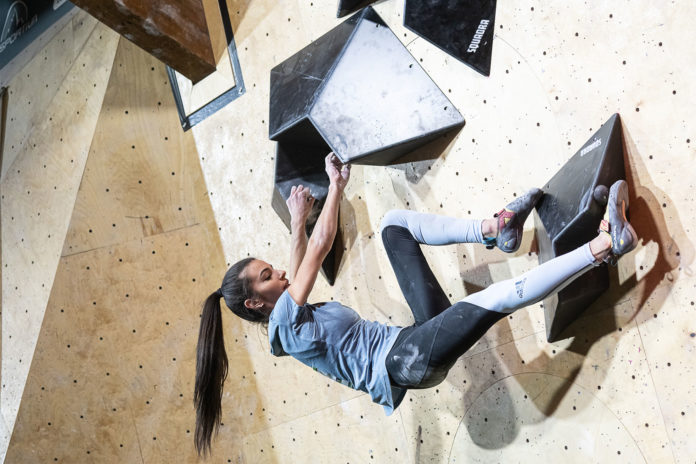
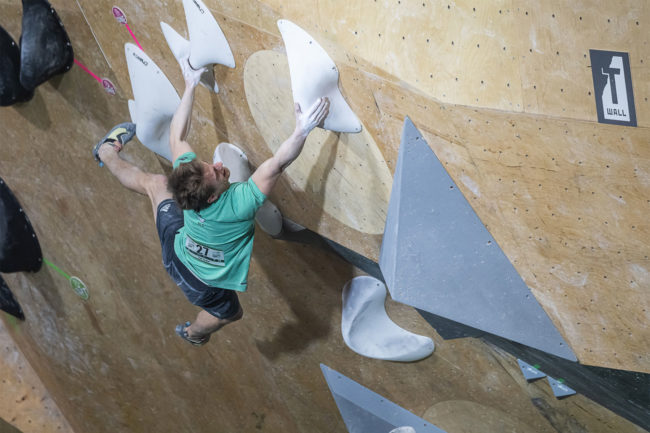
[Branded Content]
As climbing gyms across the country reopen their doors, it’s important to remember business is not business as usual yet. New cases of the Coronavirus (COVID-19) are still popping up, and nearly all climbing gyms are reopening in phases or implementing extra health and safety measures.
When it comes to buying new climbing holds in this climate, some gyms might consider cutting costs by allocating less funds to top-tier holds. But there are reasons to think twice before closing this door too early. Below are seven reasons why climbing gyms still need premium holds during (and after) this period.
1.Professional Routesetting and Holds Are Minimum Basic Operations
The old adage that “routesetters create the number one product climbing gyms sell” is especially true right now, as gyms implement social distancing measures. Climbers can’t experience community in the same way, but they can go to the gym for the routes. These routes can only be climbed if they are set and the people setting them have the right materials to do so. Routesetting and holds are thus minimum basic operations of climbing gym businesses. This conclusion may be obvious, but the progression to the next conclusion less so: professional routesetting and holds are minimum basic operations.
Cody Grodzki, Director of Routesetting at High Point Climbing, compares climbing gyms to restaurants in this regard. Just as a five-star restaurant won’t sacrifice its culinary experience by firing its top chefs or replacing lobster with crawfish, so too a climbing gym in a competitive market won’t sacrifice its climbing experience by firing its top setters or replacing high-quality holds with lower-quality versions. In many markets, professional routes―and the professional holds which make them possible―have long been part of the customer experience. For gyms in these markets to stay competitive, they need to provide a certain quality of routesetting to retain their members. If you don’t, your competitor might.
“Every business has costs, whether fixed or variable, and every business is selling something. Climbing gym businesses are selling a user experience, and climbing is central to that experience,” says Grodzki, who helped stock the planned High Point gym in Cleveland, Tennessee, and other locations with new holds before the crisis. “There are situations that will come up, and obviously this one is extremely unique, but that doesn’t mean we drop the ball on the number one thing that’s making us money.”
2.Climbing Gyms Are in More Competitive Markets than Ever
With many climbers eager to get back indoors, some might think gyms won’t have a problem retaining their core members. However, there are reasons to believe climbing gyms are in more competitive markets than ever. First, just as this summer youth program series emphasizes, climbing gyms aren’t just competing with other climbing gyms. Many gym goers are weighing climbing with other fitness options, some of which are free like running and hiking. With wallets feeling lighter than usual, some of your members may find themselves reconsidering their monthly commitments. In addition to applying extra hygiene and safety measures, climbing gyms can encourage members to stay members by continuing to provide a superior climbing experience.
Second, don’t forget there’s a new kid on the block. The homewall boom during quarantine has brought climbing to the garage, backyard, basement and guest room of homes around America. For these climbers, the choice is not just between climbing and other fitness opportunities. Instead, the choice is between two different climbing environments. Climbing on self-set routes with small holds on 8-foot walls is a lot different than climbing professionally-set routes with large volumes on 45-foot walls. It’s hard to afford top-notch holds as one consumer―easier to spread the cost among hundreds of gym members―and volumes are a physical impossibility for some homewalls. This is where gyms can stay ahead of the curve.
“As more gyms start to open back up, you could see homewallers start to develop a preference for holds,” suggests Grodzki. “If you have been climbing in a cramped space at home, you probably want to go to a climbing facility that has invested in more diverse holds, routes and walls.”

3.Competitions and Teams Are Coming Back in the Long Run
No gym serves one type of person, and advanced tools empower routesetters to engage diverse groups of climbers, during public sessions as well as competitions. Local comps have been on hold for now, but they are coming back. And when they do, the future of climbing competitions in a COVID-19 world will likely include social distancing measures. With community feeling different as fans stay six feet from one another or watch from home, the climbing elements become even more important. And with top-tier holds, setters can keep things interesting.
“I do think there’s a need to make it more inspiring for audiences,” says Garrett Gregor, a Level 5 Certified USAC Routesetter and IFSC Certified Junior Routesetter. “Every sport is dealing right now with how to keep their audiences engaged and still put on their sport. That’s an element we’ll lose a bit with social distancing, but it’s an opportunity to highlight what climbing is and what climbing can do.”
In the meantime, some climbing teams are still training with remote exercises and homewalls. When their gyms do reopen, training on the latest holds helps team climbers stay in comp shape and prepare to climb on these shapes in competitions. Plus, fresh plastic helps keep morale high during low periods.
“That’s one of the things that makes climbing so compelling. There’s always something new,” says Gregor, who was also a coach of Team ABC for nearly ten years. “The teams want to get back to that style of climbing and start preparing for the next thing, so give them something to look forward to now.”
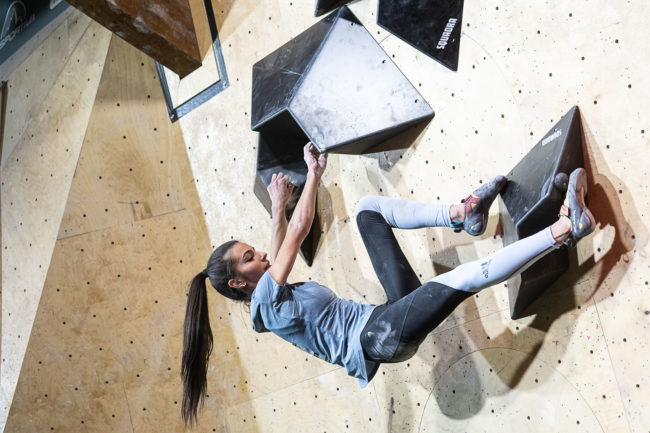
4.Better Holds Build Better Climbers
From local teams in gyms to international athletes training at the highest level, climbers have long been turning to better holds to become better climbers. Roman Krajnik, a private coach of several elite athletes from Slovenia―including future Olympian Janja Garnbret and IFSC World Cup stars Domen Škofic and Gregor Vezonik―emphasizes the important role that new-age holds like large macros and volumes play in training. No matter the level, they are helping climbers around the world move better and reach their personal goals.
“It’s really good even for kids, for beginners, to start moving,” says Krajnik. “Because climbing is not just about pulling on holds. It’s also about moving. These kinds of holds, they force you to move. You can’t just grab them and pull because then you are immediately on the floor.”
In addition to coaching professional athletes in Europe, Krajnik also helps team climbers in the U.S. move well on the wall. After meeting Summit Climbing co-owner Kyle Clinkscales at the first IFSC World Climbing Camp in 2015, Krajnik has helped Team Texas athletes improve their movement every year since. That progress has been powered in part by the holds Krajnik contributed. A friend of 360 Holds founder and fellow Slovenian Simon Margon, Krajnik introduced these revolutionary fiberglass volumes and others to Team Texas. Since then, Krajnik has noticed a significant change in how the team climbers move and execute intended movements.
“When I came for the first time to Dallas, I said, ‘Wow, you need some better holds.’ Because I was really disappointed there were just―I call them American jugs and potatoes―really old holds on the wall. I said, ‘You can’t train on these holds. You can’t improve. You can’t make the movement better,’” says Krajnik.
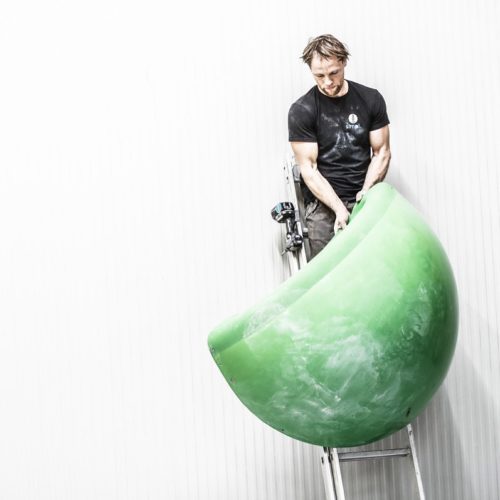
5.Members of Climbing Gyms Expect a High-Quality Experience
With the evolution of the climbing hold and adjacent rise in the routesetting profession, climbing in gyms has certainly come a long way. V-hard is no longer a more extended reach to a smaller crimp. Now, routesetters have new tools in their toolbox, and their members have come to expect a new experience.
One of the companies powering that movement with premium holds is called just that: Premium Holds. After the initial success, Summit Climbing co-owners Stan Borodyansky, Clinkscales and Chris LoCrasto worked with Krajnik to import more holds from Europe. The Premium Holds group has since expanded to include six brands from the most renowned shapers in Europe. Premium Holds offers a smorgasbord of grips ranging from Squadra fiberglass Fichtl dishes to Simpl. dual-tex wood Pyramids, Lapis fiberglass Giga pinches and edges, and most recently the classy Nature Climbing woodies. Each hold brings a unique contribution to the U.S. holds market and is shaped by the best in the biz.
After 360, the company’s next macros and volumes were imported from French legend Laurent Laporte, founder of Cheeta. Laporte and Margon are IFSC Routesetters who have been climbing, competing, coaching, setting, shaping and experimenting with hold technology for decades. The infamous dual-tex Cheeta Craters, massive 360 Quarters, and countless other shapes seen on the IFSC World Cup circuit and at USAC Nationals are becoming the standard in climbing gyms. Krajnik recalls one route set with only 360 volumes at Summit Climbing Plano being one of the most popular climbs in the gym.
“A lot of the climbing holds and volumes that originated there have become available to laymen in the gym,” says LoCrasto, who described some of the new movements gained from new shapes on Climbing Business Journal last year. “It’s something that our members are coming to expect at the Summit gyms.”
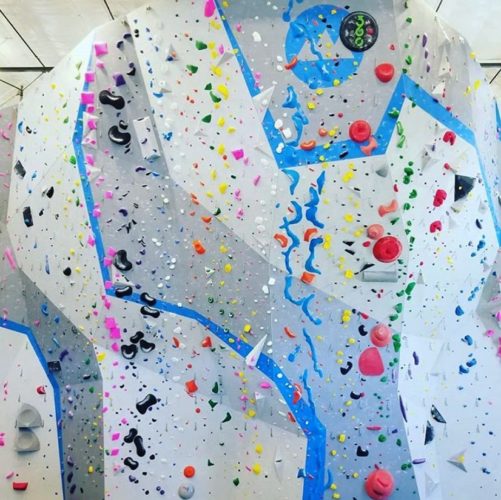
6.Climbers of All Skill Levels Can Benefit from 3D Climbing
Nowadays when we watch IFSC competitions we see parkour-like running and gymnastic-style dynos. While large volumes do enable that style, they have another fundamental benefit for commercial routesetting which Canon Huse, Director of Premium Holds, summarizes in two words: 3D climbing.
“So much of climbing in the gym used to be 2D, climbing on a flat plane. The walls may have been angled back, but you were still only climbing in that plane,” says Huse. “When you put these volumes on, you add a dimension that climbers find outside but is hard to replicate inside without these pieces.”
In addition to its appeal for experienced outdoor and indoor climbers, the full utility of the volume includes its value for less experienced climbers as well. In being able to transform the landscape on a three-dimensional level, routesetters can add advanced coordination moves like a triple-clutch or dyno, paddles and skates, but they can also open up challenging terrain to new climbers. No longer do the gazes of first-time climbers turn to the familiar slab wall. The whole gym is at their fingertips now. And with the advancement of routesetting, new members are trying those jaw-dropping moves they see on TV too.
“Really big volumes like those of 360 effectively change the angle of the wall,” says LoCrasto. “So you can be in a 45-degree overhang but your body’s standing on a four-foot volume in a vertical position. That’s the biggest power you have there: changing the terrain for the benefit of all your members.”
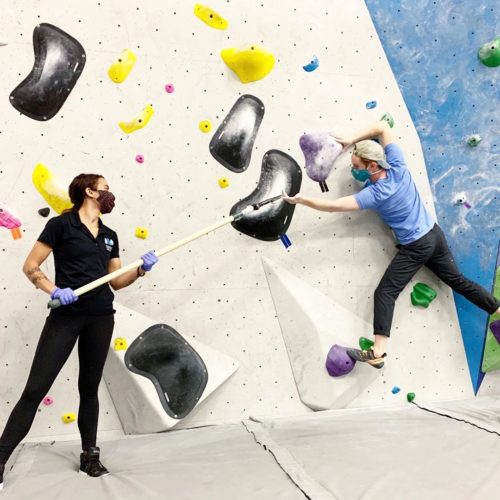
7.Gyms Can Get Discounts and Financing in the Short Run
Finally, climbing gyms can take advantage of low pricing on quality holds right now. During COVID-19, several hold companies are offering discounts and even financing options. The Premium Holds group, for instance, is offering gyms extended payment plans at very low interest. What’s more, Premium Holds is a one-stop shop, with six brands under the same umbrella shipping from Dallas headquarters. Rather than buying from multiple sources and paying for shipping again and again, climbing gyms can obtain a variety of holds from the best shapers in the world all in one buy. And with many gyms opting for a higher turnover rate on routes to keep holds clean, the need for more quality holds is greater than ever.
“We pride ourselves on helping gyms get great holds, not on pushy sales tactics,” says Huse. “We want to build relationships, not upsell you. At Premium Holds, we are first and foremost routesetters and gym owners and use that perspective to make sure you are getting what you need. The holds speak for themselves.”
To get the premium holds your gym needs, email a completed order form to Canon Huse today.

Premium Holds was inspired by European setters who began shaping holds that allowed for a complete reimagination of climbing movement. Established in 2016, the Premium Holds lineup includes hold brands owned by some of the greatest routesetters and shapers in the world, and each shape Premium distributes is a glimpse through the lens of those setters. Now distributing 360, Cheeta, Lapis, Nature Climbing, Simpl, Squadra to North American climbing gyms.





